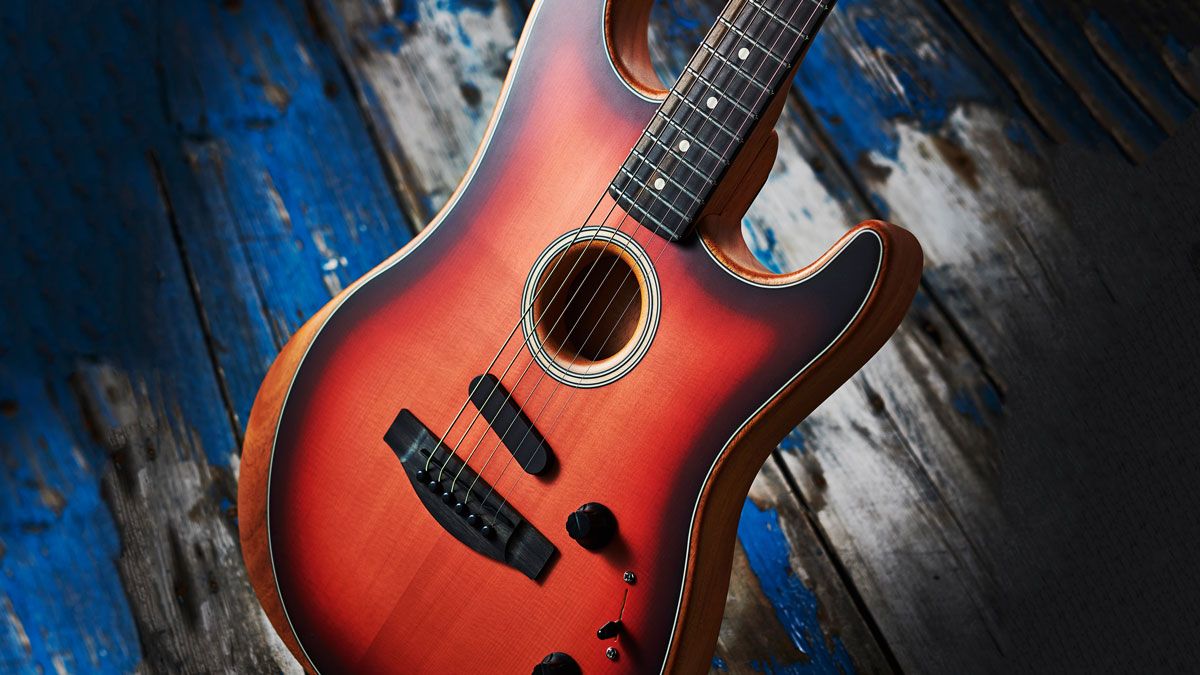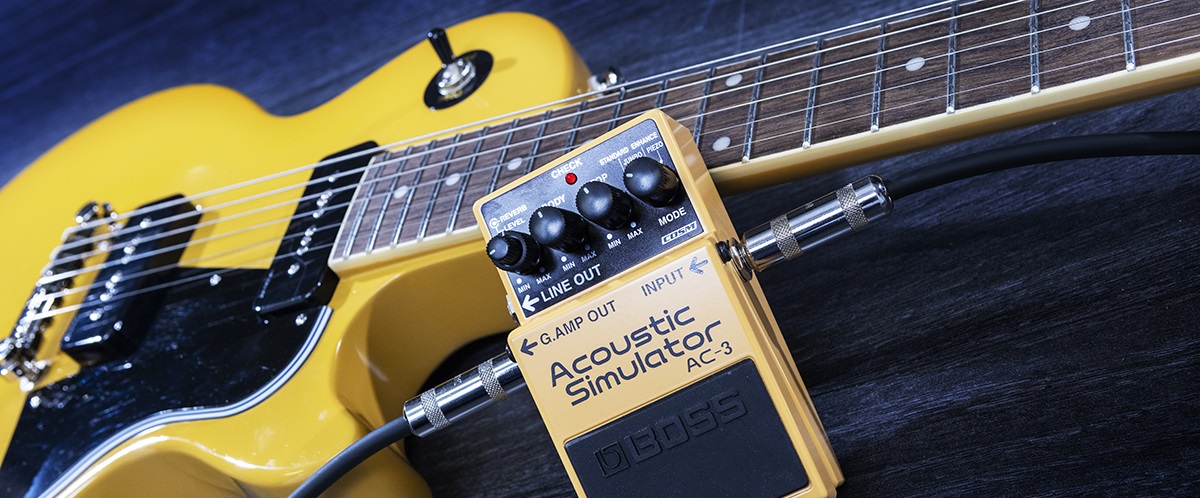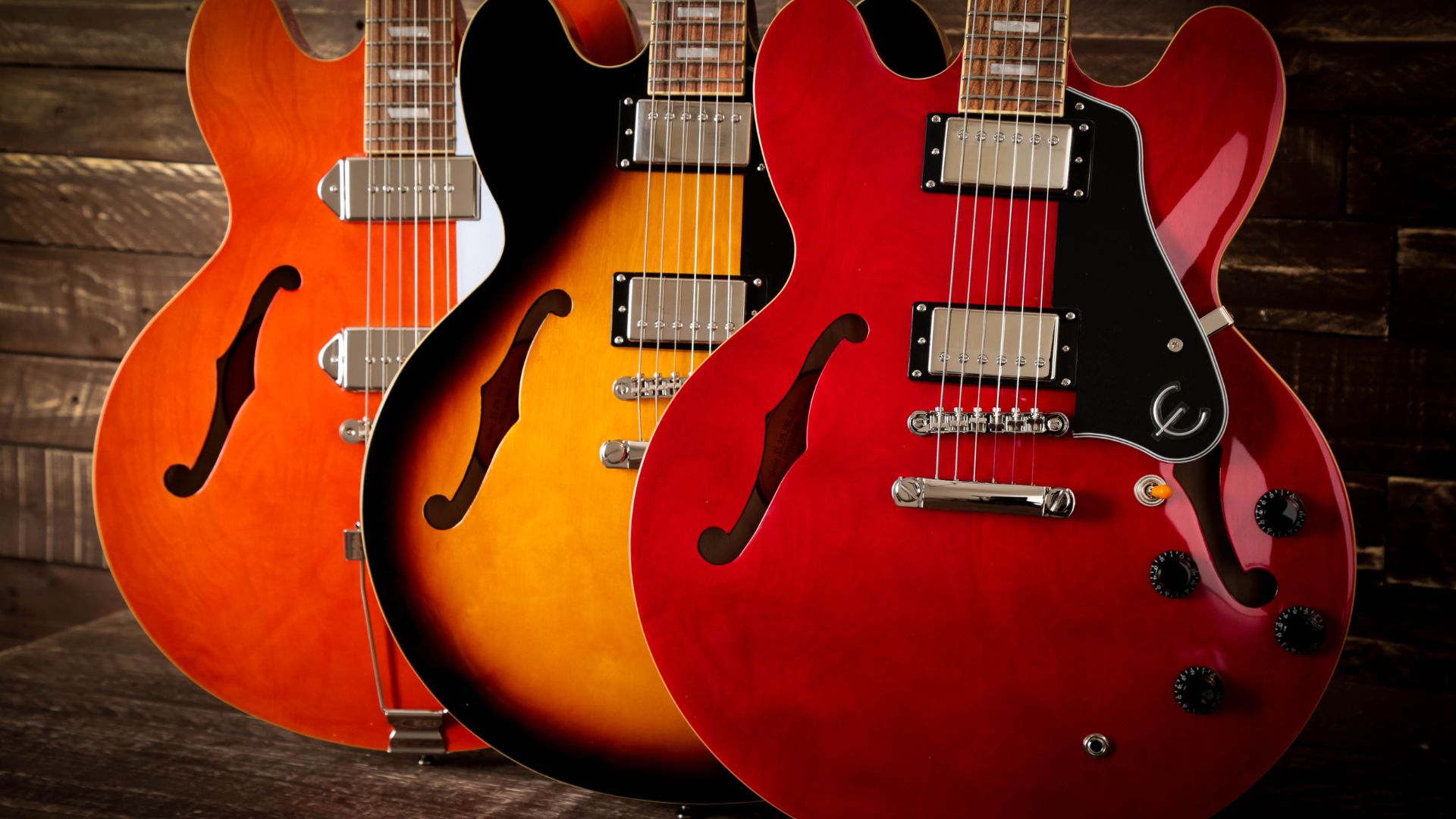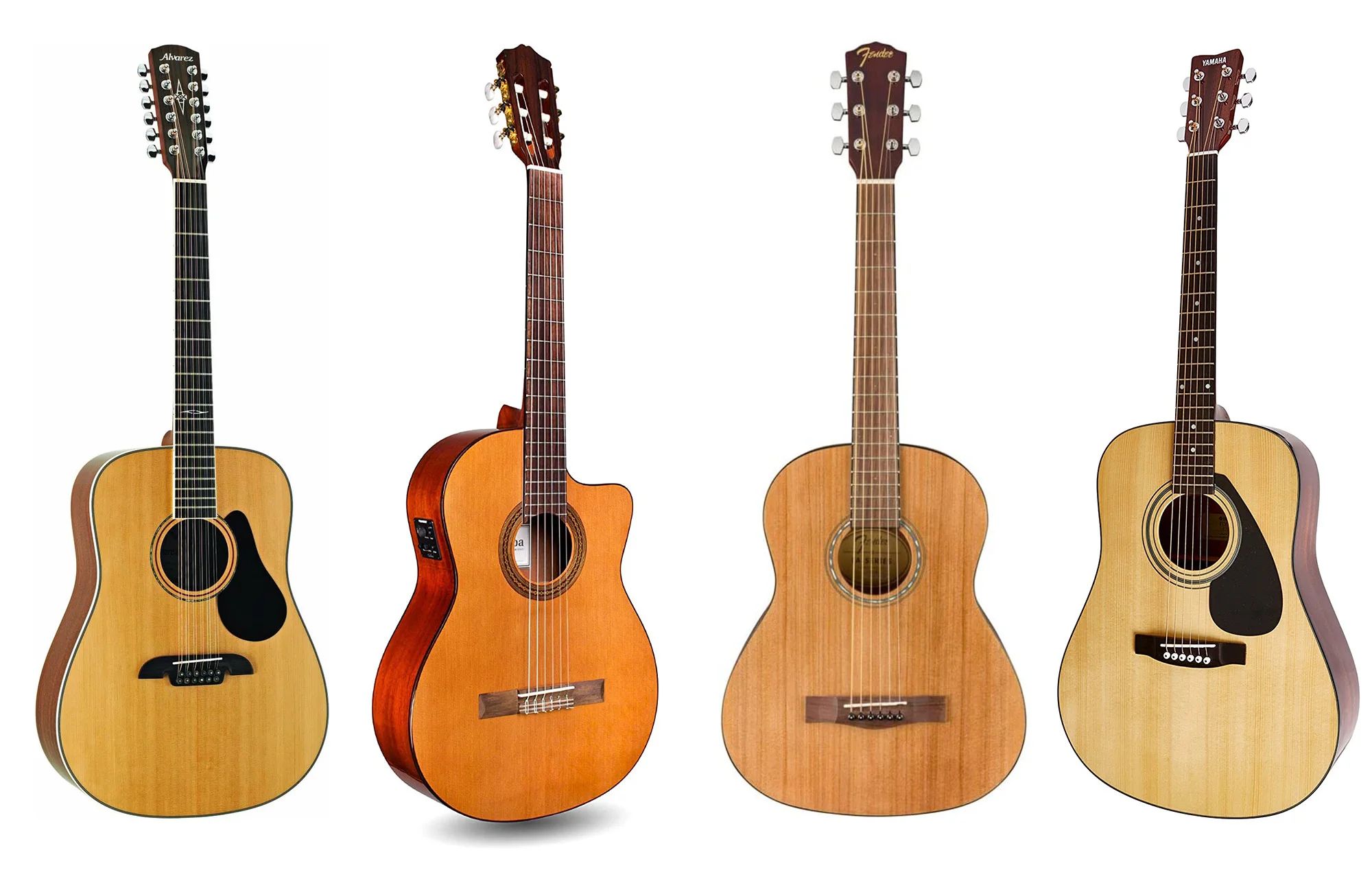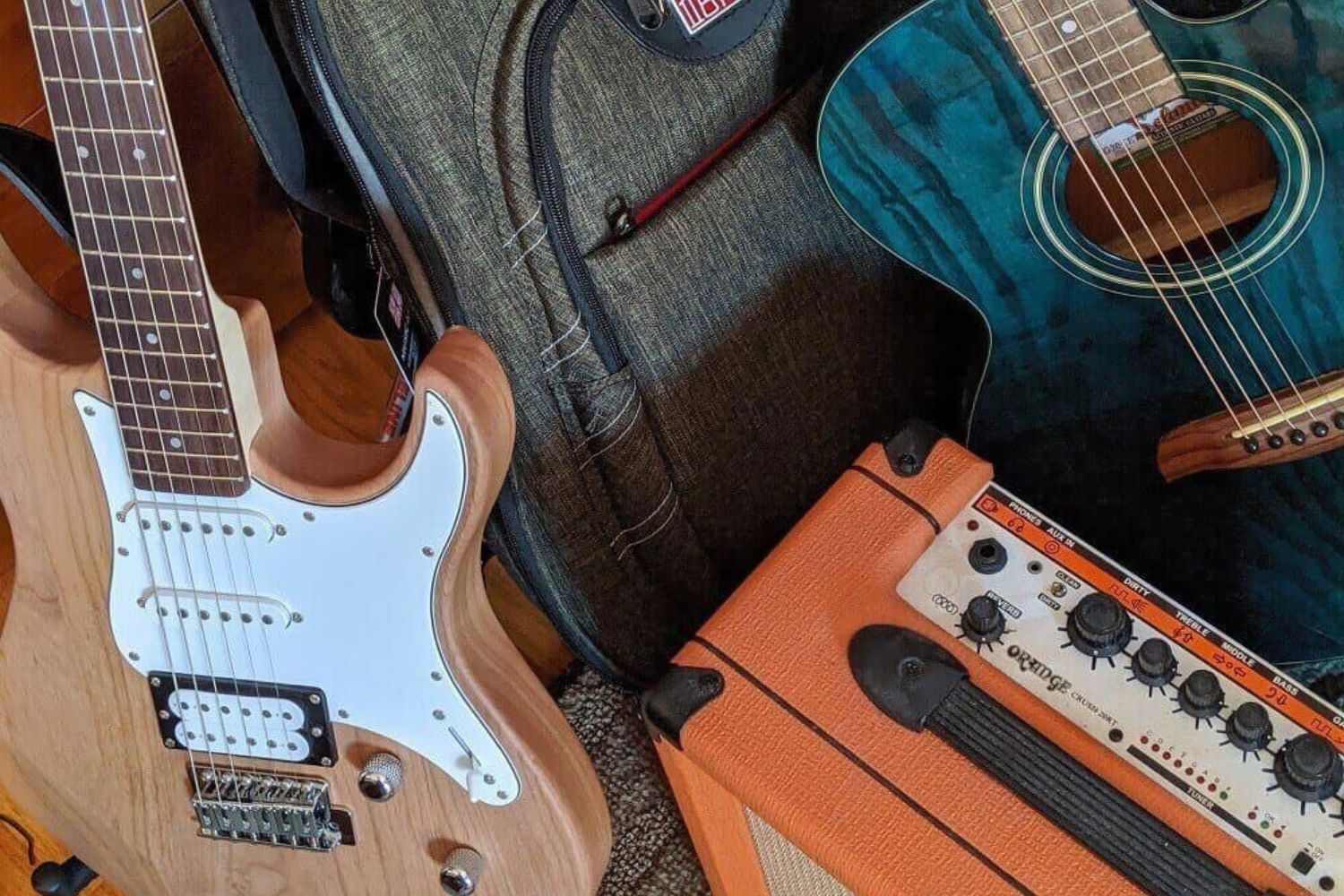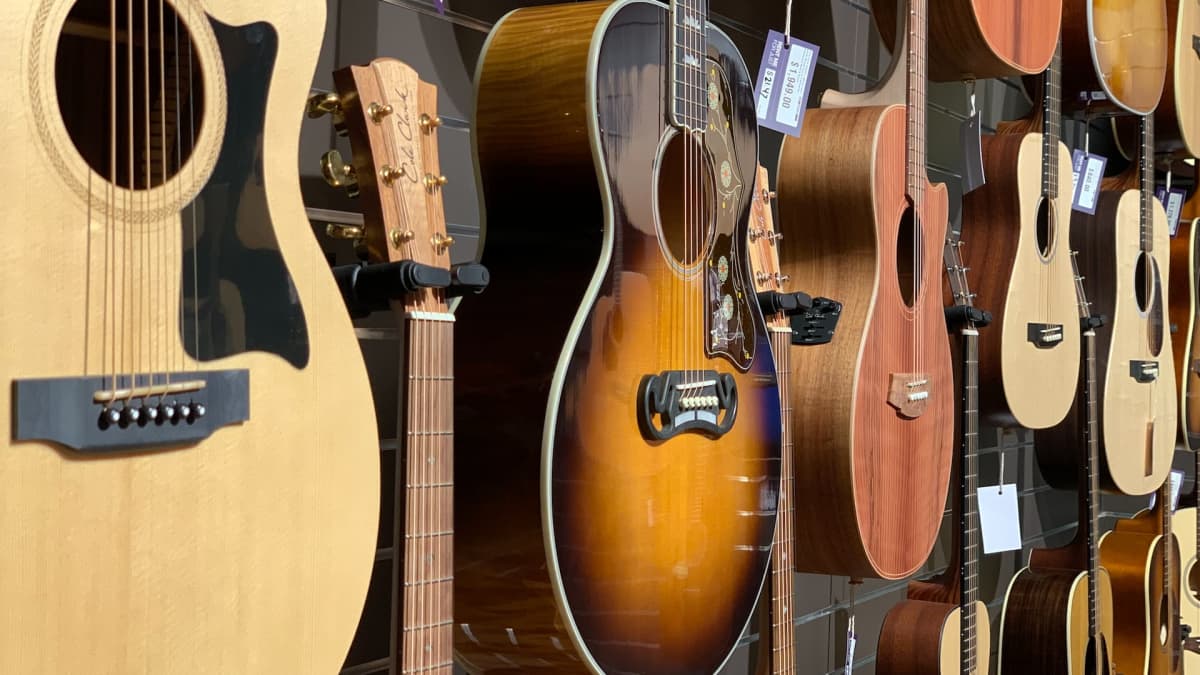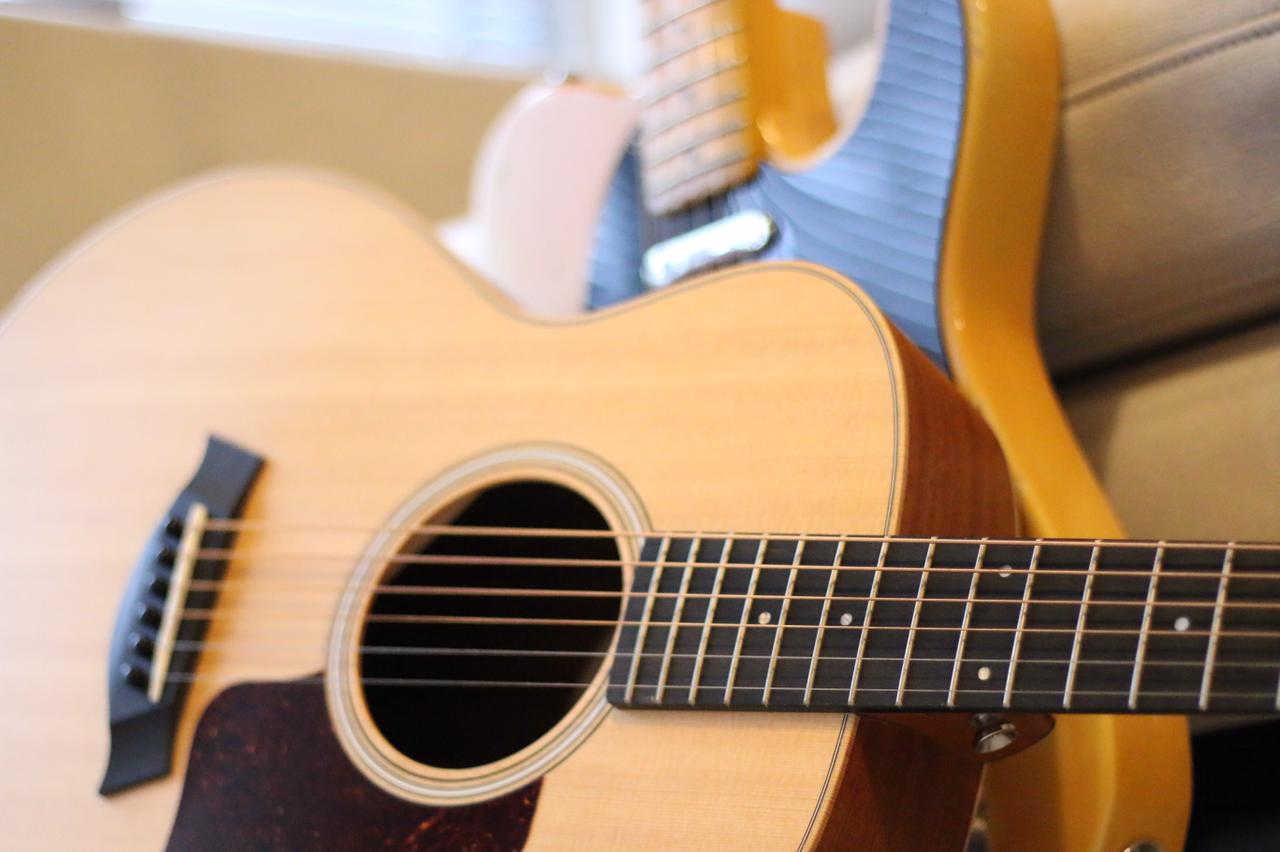Introduction
An acoustic guitar and an electric guitar are two distinct instruments with different sounds and characteristics. While acoustic guitars produce sound through the vibrations of their strings, an electric guitar relies on electric pickups and amplification to produce its unique sound. However, if you are an acoustic guitar player looking to achieve a more electric guitar-like sound, there are techniques and gear that can help you get closer to that desired tone.
Playing an acoustic guitar that sounds like an electric guitar can be a fun and rewarding experience. It allows you to explore different genres and styles of music that are traditionally associated with electric guitars, such as rock, blues, and jazz. Whether you want to emulate the screaming solos of a rock guitarist or the warm tones of a bluesy electric guitar, there are ways to achieve that sound on your acoustic instrument.
In this article, we will explore the anatomy of acoustic and electric guitars, discuss the similarities between the two, and provide tips and recommendations on how to make your acoustic guitar sound more like an electric. Whether you are a beginner looking to expand your playing techniques or an experienced acoustic guitarist looking for new inspiration, this article will give you the tools and knowledge to achieve an electric guitar-like sound on your acoustic instrument.
The Anatomy of an Acoustic Guitar
Before we delve into the ways to make your acoustic guitar sound like an electric, let’s first understand the basic components that make up an acoustic guitar.
The body of an acoustic guitar is typically made of wood and has a hollow interior which serves as a resonance chamber. The two main types of acoustic guitar bodies are the dreadnought and the concert. The dreadnought has a large body and produces a bold and powerful sound, while the concert body is smaller and offers a more balanced and intimate tone.
The top of the guitar body, known as the soundboard, is made of a thin piece of wood, typically spruce or cedar, which vibrates as the strings are played. This vibration creates the sound that we hear. The back and sides of the guitar are usually made of a different type of wood, such as mahogany or rosewood, which affects the tone and overall resonance of the instrument.
The neck of the guitar is attached to the body and is usually made of a solid piece of wood. It is where the fretboard is mounted, and the frets are placed. The fretboard is typically made of rosewood or ebony and is where the player presses down on the strings to produce different pitches and notes.
The headstock, located at the end of the neck, is where the tuning pegs or machine heads are located. These allow the player to adjust the tension of the strings to achieve the desired pitch.
Lastly, the strings are a crucial component of the acoustic guitar. They are usually made of steel or nylon, with steel strings being more common in contemporary acoustic guitars. The strings are attached to the bridge, which is located on the body of the guitar, and then pass over the soundboard and fretboard to the headstock.
Understanding the anatomy of an acoustic guitar is essential as it provides the foundation for knowing how to change and manipulate its sound to achieve an electric guitar-like tone. With this knowledge, we can now explore the differences and similarities between acoustic and electric guitars and learn how to bridge the gap between the two.
The Anatomy of an Electric Guitar
Now let’s shift our focus to the anatomy of an electric guitar. While there are similarities between acoustic and electric guitars, there are also key differences that contribute to the unique sound and playing experience of an electric instrument.
One of the main distinctions is that electric guitars don’t rely on the resonating body of an acoustic guitar to produce sound. Instead, they use electromagnetic pickups to convert the vibration of the strings into an electrical signal. These pickups are typically located beneath the strings and capture the string vibrations, sending the signal to an amplifier.
Electric guitars usually have a solid body construction, which is often made of wood such as maple, mahogany, or alder. The solid body design helps reduce feedback and allows for more control over the instrument’s tone through amplification and effects.
The neck of an electric guitar is similar to that of an acoustic guitar, with a fretboard mounted on it for playing different notes. However, electric guitar necks may have a thinner profile and are often made of materials like maple or rosewood.
The headstock of an electric guitar is where the tuning pegs or machine heads are located, allowing for precise tuning of the strings. Additionally, electric guitars sometimes feature a locking system to improve tuning stability, particularly for players who use tremolo bars or dive-bomb techniques.
Unlike acoustic guitars, electric guitars often have multiple pickups and a range of controls, such as volume and tone knobs, pickup selectors, and sometimes additional switches for coil-tapping or phase-shifting. These controls allow guitarists to shape and manipulate the sound of the instrument.
It’s important to note that while electric guitars require amplification to produce their characteristic sound, they can also be played unplugged, albeit with significantly reduced volume and tone.
Understanding the different components and functionalities of an electric guitar will help us explore the ways in which we can make an acoustic guitar imitate the sounds and characteristics of an electric instrument. Let’s now explore the similarities between acoustic and electric guitars and how we can leverage that knowledge to achieve an electric guitar-like sound on an acoustic guitar.
Similarities Between Acoustic and Electric Guitars
Although acoustic and electric guitars differ in several ways, there are notable similarities between them that can help us in our quest to make an acoustic guitar sound like an electric. Understanding these commonalities is crucial for achieving the desired tone and playing experience.
First and foremost, both acoustic and electric guitars share the same basic structure. They have a neck, a fretboard, and strings that are played by plucking or strumming. This similarity allows for the transfer of techniques and skills between the two instruments.
Both types of guitars also follow the same tuning system, with standard tuning being E-A-D-G-B-E. This means that the same chord shapes and scales can be used on both acoustic and electric guitars.
Furthermore, the principles of music theory, such as scales, chords, and intervals, apply to both instruments. This means that the knowledge and techniques you have already acquired on acoustic guitar can be carried over to playing electric guitar-like sounds on an acoustic instrument.
Another similarity lies in the fact that playing techniques such as strumming, fingerpicking, and bending notes can be used on both acoustic and electric guitars. By using similar playing techniques, you can enhance the electric guitar-like sound on your acoustic instrument.
In addition to technique, effects and pedals that are commonly used with electric guitars can also be applied to acoustic guitars. Effects such as reverb, delay, and distortion can help simulate the sounds typically associated with electric guitars. While the amplification requirements may differ, the concept remains the same—using effects to modify the tone and character of your playing.
Lastly, both acoustic and electric guitars offer a wide range of styles and genres that can be explored. While acoustic guitars are often associated with folk, country, and classical music, electric guitars are commonly used in rock, blues, jazz, and metal genres. However, with the right techniques and equipment, you can break these genre boundaries and create your own unique blend of styles.
By focusing on these similarities, we can start bridging the gap between acoustic and electric guitars and begin to explore techniques and gear that will allow us to achieve an electric guitar-like sound on our acoustic instrument. In the next section, we will delve into specific tips and tricks to help you on this sonic journey.
How Acoustic Guitars Can Mimic Electric Guitars
While acoustic guitars and electric guitars have inherent differences in their construction and sound production, there are techniques and approaches that can help acoustic guitars mimic the sounds and characteristics of electric guitars.
One way to achieve an electric guitar-like sound on an acoustic instrument is through proper playing techniques. Playing closer to the bridge, where the strings are tighter, can produce a brighter and more pronounced tone similar to that of an electric guitar. Additionally, experimenting with different pick thicknesses, angles, and picking styles can help replicate the attack and dynamics associated with electric guitar playing.
Another technique is to incorporate palm muting. Similar to how electric guitarists use their palm to lightly touch the strings near the bridge, applying palm muting on an acoustic guitar can add a percussive and muted quality to the sound, reminiscent of an electric guitar. This technique is especially effective when playing rhythmic parts or power chords.
Utilizing alternate and open tunings can also help in emulating the versatility of an electric guitar. By exploring different tunings like Drop D, Open G, or DADGAD, you can create unique chord voicings, allowing for a wider range of tonal possibilities and facilitating the playing of certain electric guitar-style riffs and chords.
Furthermore, incorporating effects pedals designed for acoustic guitars can enhance the electric guitar-like sound. Pedals such as overdrive and distortion can add grit and saturation to the tone, while modulation effects like chorus or phaser can create swirling and ethereal textures similar to that of electric guitar effects. Just be sure to choose pedals specifically designed for acoustic guitars to maintain the instrument’s natural tone.
Amplification is another crucial factor in achieving an electric guitar-like sound on an acoustic instrument. Using an acoustic guitar amplifier or acoustic preamp with EQ controls can shape the tone and simulate the frequency response and characteristics of an electric guitar amp. Experimenting with different settings can help you find the right balance between the natural acoustic sound and the desired electric guitar tone.
Lastly, consider using a guitar pickup system if your acoustic guitar doesn’t already have one. These pickup systems capture the sound of the guitar and allow for direct amplification. You can choose pickups that are specifically designed to replicate the sound of electric guitars, further enhancing the electric guitar-like qualities of your acoustic instrument.
By combining these techniques and tools, you can transform your acoustic guitar into a versatile instrument capable of mimicking the tones and playing styles of electric guitars. Experimentation and practice are key to finding the right balance and discovering your unique sound.
Tips for Achieving an Electric Guitar Sound on an Acoustic Guitar
If you want to make your acoustic guitar sound more like an electric guitar, here are some helpful tips to guide you on your sonic journey:
1. Experiment with different playing styles: Explore various playing techniques such as palm muting, slides, and bends to mimic the expressive qualities of an electric guitar. Pay attention to the placement of your fingers and pick to achieve the desired tonal effects.
2. Utilize a thinner pick: Switching to a thinner pick can help emulate the attack and feel of an electric guitar’s pick attack. This can result in a brighter and more defined sound, particularly when playing lead lines or single-note melodies.
3. Adjust your string gauge: Consider changing to a lighter gauge of strings. Lighter strings are easier to bend and manipulate, allowing you to execute electric guitar-like techniques more effortlessly.
4. Incorporate effects pedals: Introduce effects pedals that are commonly used with electric guitars, such as overdrive, distortion, chorus, or delay, to add depth and texture to your acoustic sound. Experiment with different combinations to find the desired electric guitar-like tone.
5. Explore amp simulation: Utilize amp simulation plugins or devices to replicate the sound of an electric guitar amplifier. These tools often offer a wide variety of amp models and adjustable parameters to help you achieve the tone you desire.
6. Try alternate tunings: Experiment with alternate tunings to create unique chord voicings and melodic possibilities. Some tunings, like Open G or Drop D, can help you replicate specific electric guitar sounds and riffs.
7. Consider using a soundhole cover: A soundhole cover can reduce unwanted resonance and increase sustain, giving your acoustic guitar a more focused and controlled tone that is closer to the sustained sound of an electric guitar.
8. Experiment with EQ settings: Use the EQ controls on your amplifier or equalizer pedal to shape the frequency response of your acoustic guitar. Boosting or cutting specific frequencies can help dial in an electric guitar-like tone.
9. Develop a strong sense of rhythm: Electric guitar playing often emphasizes strong rhythmic patterns. Focus on developing your sense of rhythm and groove to capture the essence of playing an electric guitar on your acoustic instrument.
10. Practice regularly: As with any skill, practice is essential. Continuously work on your technique, explore new sounds, and listen to and learn from accomplished electric guitar players to hone your ability to produce convincing electric guitar-like sounds on your acoustic instrument.
Remember, achieving an electric guitar sound on an acoustic guitar is a creative process that requires experimentation and patience. Embrace the unique qualities of your acoustic instrument while exploring new ways to push its sonic boundaries. Enjoy the journey and have fun exploring the versatility of your acoustic guitar!
Recommended Gear and Accessories for Playing Acoustic Like an Electric
To enhance your acoustic guitar’s ability to imitate the sound and feel of an electric guitar, here are some recommended gear and accessories:
1. Acoustic-Electric Guitar: Consider investing in an acoustic-electric guitar, which has a built-in pickup system. This allows you to easily connect your guitar to an amplifier or PA system, giving you better control and flexibility over your tone.
2. Effects Pedals for Acoustic Guitars: Look for effects pedals specifically designed for acoustic guitars. These pedals are engineered to preserve the natural sound of your instrument while offering effects like chorus, reverb, or delay that can add depth and texture to your sound.
3. Preamp and DI Box: Use a dedicated preamp and DI (Direct Injection) box to enhance the signal of your acoustic guitar when connecting to mixers, audio interfaces, or PA systems. These devices can help shape your tone and maintain a clean and balanced signal.
4. Acoustic Simulator Pedal: An acoustic simulator pedal is designed to transform the sound of your electric guitar into a convincing acoustic guitar tone. This type of pedal can be useful if you want to experiment with electric guitars while still capturing an acoustic-like sound.
5. EQ Pedal or Equalizer Plugin: An EQ pedal or equalizer plugin can assist in shaping your acoustic guitar’s tone to simulate the frequency response of an electric guitar. Adjusting the EQ settings can help you achieve a more focused and amplified electric guitar-like sound.
6. Amplifier or Acoustic Guitar Amp: Consider investing in a dedicated acoustic guitar amplifier or an acoustic guitar amp designed to accurately reproduce the natural tones of your instrument. These amps often have built-in effects, EQ controls, and notch filters to further shape your sound.
7. Compression Pedal: A compression pedal can help even out the dynamic range of your acoustic guitar’s signal, simulating the sustained and consistent sound of an electric guitar. It can also enhance the sustain and attack of your notes.
8. D.I.Y. Modifications: If you are comfortable with modifying your guitar, there are various DIY modifications that can help you achieve an electric guitar-like sound. These modifications include installing an electric guitar-style pickup, adding a soundhole cover, or incorporating a feedback buster to reduce unwanted resonance.
9. Strap Locks: Using strap locks can provide greater security and stability when playing your acoustic guitar in an electric guitar style. This allows you to move freely without worrying about your guitar slipping off the strap.
10. Ear Training Tools: To improve your ability to reproduce electric guitar sounds on your acoustic instrument, consider using ear training tools or apps that can help you recognize and replicate specific tones, scales, or chord voicings associated with electric guitars.
Remember, while the gear and accessories mentioned above can enhance your acoustic guitar’s ability to mimic an electric guitar, the most important factor is your playing technique and creativity. Experiment with different combinations, settings, and playing styles to discover your unique electric guitar-like sound on your acoustic instrument.
Conclusion
While acoustic and electric guitars have distinct sounds and characteristics, it is indeed possible to make your acoustic guitar play like an electric. By understanding the anatomy of both instruments, exploring their similarities, and utilizing proper techniques and gear, you can achieve an electric guitar-like sound on your acoustic instrument.
Through experimentation with playing styles, utilizing effects pedals, adjusting string gauges, and exploring amp simulation, you can emulate the tone and feel of an electric guitar. Additionally, incorporating alternate tunings, using a soundhole cover, and practicing with rhythm and dynamics can further enhance your acoustic guitar’s versatility.
Keep in mind that the gear and accessories recommended are tools to assist you in achieving an electric guitar-like sound, but the most important element is your creativity and exploration. Develop your own playing techniques, embrace your acoustic guitar’s unique qualities, and push the boundaries of what is possible.
Remember, the journey to playing acoustic like an electric is about finding your own voice and expression. Enjoy the process of discovering new sounds and playing styles, and let your acoustic guitar take on a new dimension as it mimics the tones and characteristics of an electric guitar.
So, take what you’ve learned, grab your acoustic guitar, and dive into the exciting world of playing like an electric. With passion, practice, and a sense of adventure, you’ll be able to create extraordinary music and unlock a whole new realm of possibilities with your acoustic instrument.







